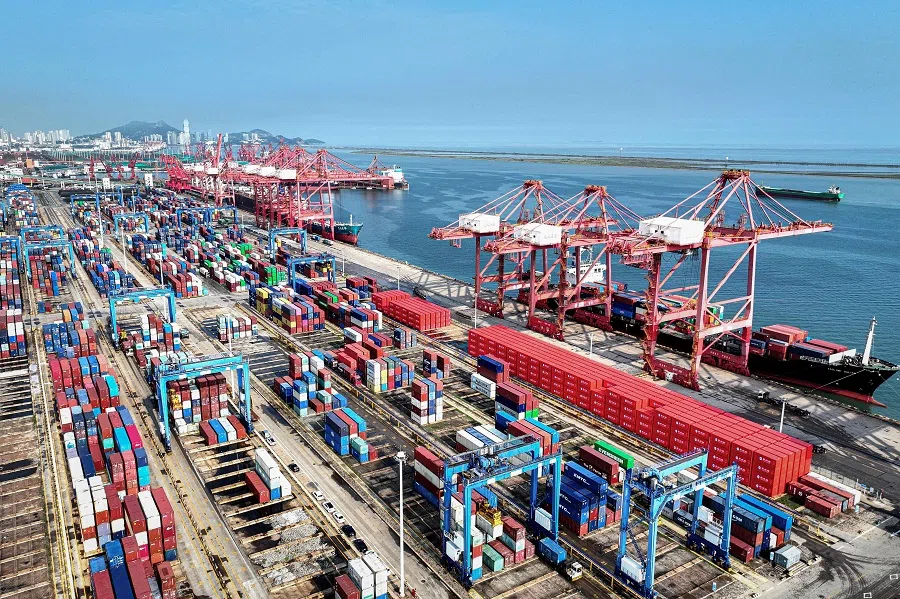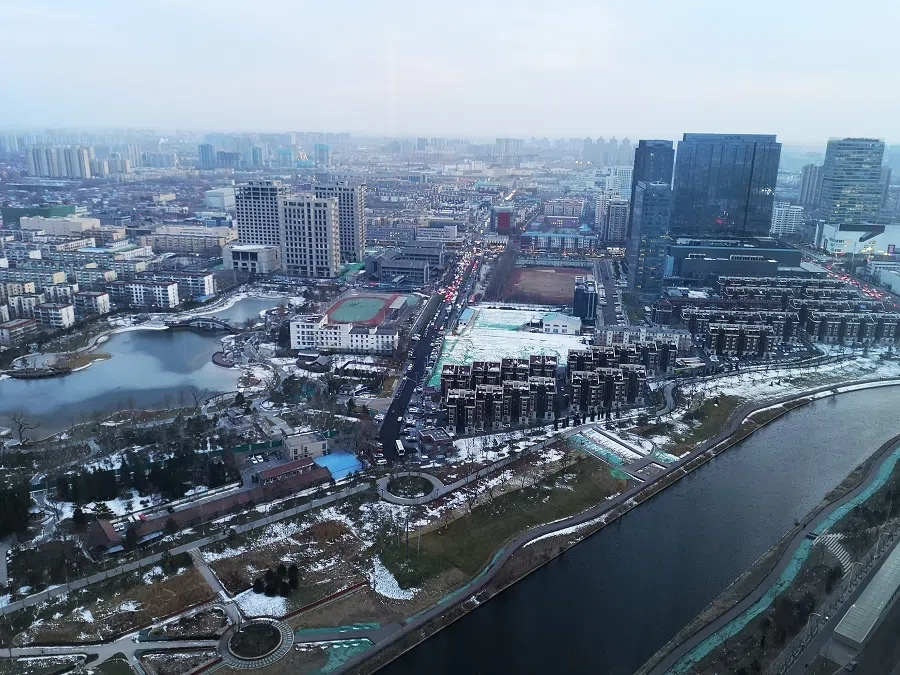Who will fund China’s ambitious canal projects amid economic uncertainty?
Lianhe Zaobao correspondent Yu Zeyuan takes a look at the boom in canal development in China as a new means for officials to spur investment, smooth out internal and external circulation, and spearhead regional development.

Recent reports about plans in six provinces and areas in central and southern China to construct new canals have spurred much debate and attention in China. More than a millennium after the historic Beijing-Hangzhou Grand Canal connected the north and south, China may be on the verge of a new era for canal construction.
Given that China’s economic revival remains lacklustre, construction of domestic infrastructure such as railways, highways and airports has slowed down, but the construction of canals — also considered a pillar infrastructure — has suddenly surged.
Guangxi, Jiangxi, Hunan, Hubei, Anhui and Henan have all placed heavy emphasis on canal construction, set to invest an estimated 850 billion RMB (US$119.83 billion) in total.
Guangxi developing Pinglu Canal for direct sea access
Guangxi is going full steam ahead with its excavation for the Pinglu Canal — the first ever major canal project undertaken by the People’s Republic of China since its establishment in 1949, and also a key project in the Western Region Land-Sea Corridor.
The Pinglu Canal will connect the Yangtze River, Pearl River, and Gulf of Tonkin, allowing goods from China’s southwest and central south regions to reach Southeast Asian ports like Vietnam, Malaysia and Singapore directly by sea.
The 134.2-kilometre canal will stretch from the Pingtang River estuary of the Xijin Reservoir in Nanning’s Hengzhou, Guangxi, where it will later merge with Qianjian River in Luwu town, Lingshan county, Qinzhou, and head towards the Gulf of Tonkin.
The entire waterway would be constructed to meet the Class One inland waterway standards, in which 5,000-tonne ships can navigate. The total investment for this project is estimated at 72.7 billion RMB.

Construction of the Pinglu Canal began in August 2022, with the main project slated for completion by the end of 2026. This canal aims to ease navigation pressure downstream of the western Yangtze River, reducing the burden on Yangtze River traffic. It will also connect with the Lingqu Canal, which is currently in the research and demonstration phase of its expansion plans.
The Pinglu Canal will connect the Yangtze River, Pearl River, and Gulf of Tonkin, allowing goods from China’s southwest and central south regions to reach Southeast Asian ports like Vietnam, Malaysia and Singapore directly by sea. This development will fundamentally transform Guangxi, which currently lacks direct river or canal access to the sea despite its coastal location.
Expanding Lingqu Canal across Hunan and Guangxi
At the same time, Guangxi is working with Hunan to push for a key expansion of the Lingqu Canal, which will run across Jiangyong county in Yongzhou, Hunan, to Pingle county in Guilin, Guangxi. The canal will span roughly 300 kilometres, with 212 kilometres in Hunan and 88 kilometres in Guangxi.
According to preliminary plans, the expanded Lingqu Canal will meet the standards for the navigation of 2,000-tonne vessels, with annual cargo throughput estimated at around 80 million tonnes, requiring a total investment of 150 billion RMB.

After completion, the canal will be connected to the two major waterways with currently the largest freight volume in China — the Yangtze River and the Pearl River — forming a grand connection between the northern and southern water transportation channels.
Jiangxi: Zhejiang-Jiangxi-Guangdong Grand Canal
In comparison with Guangxi and Hunan, Jiangxi is spending even more on canal construction. In order to build the province into a high-quality transportation hub, Jiangxi is currently treating the construction of the Zhejiang-Jiangxi-Guangdong Grand Canal as a milestone project of the century.
The canal, spanning 1,988 kilometres, is a combination of the Jiangxi-Guangdong canal and the Zhejiang-Jiangxi Canal.
The Jiangxi-Guangdong canal is set to be around 1,288 kilometres (with 758 kilometres within the area of Jiangxi) with a proposed investment of 150 billion RMB. Meanwhile, the Zhejiang-Jiangxi Canal is planned to span approximately 760 kilometres, with 410 kilometres located within Jiangxi, and is estimated to cost around 170 billion RMB.
... [The Zhejiang-Jiangxi-Guangdong Grand Canal] will solidify Jiangxi’s competitive edge as a north-south water transportation corridor, and be a key factor in spurring economic and societal development in the province.

The Zhejiang-Jiangxi-Guangdong Grand Canal is a key part of the “Four Vertical and Four Horizontal” network, a national high-level transportation network set to break new grounds for China’s inland waterways.
For Jiangxi, this canal will result in highly efficient transport to the three national strategic areas of the Beijing-Tianjin-Hebei region (Jing-Jin-Ji Metropolitan Region), the Yangtze River Delta and the Guangdong-Hong Kong-Macau Greater Bay Area. It will solidify Jiangxi’s competitive edge as a north-south water transportation corridor, and be a key factor in spurring economic and societal development in the province.
Anhui, Henan and Hubei: big plans
The Yangtze-Huaihe Grand Canal, in which Anhui invested 95 billion RMB, became operational in August 2023. It marks the end of disconnected river transportation between the midstream of the Huai River and the mid-to-d downstream of the Yangtze River.
However, constructing the main channel is just the first step for the Yangtze-Huaihe Grand Canal. Anhui officials have recently proposed a comprehensive upgrade of the main navigation lines by 2027. This plan includes extending 210 kilometres of Class Four and above waterways, allowing the Yangtze-Huaihe Grand Canal to handle a total water transport volume of over 150 million tonnes.

Henan plans to invest 141.6 billion RMB in 47 inland waterway projects. These projects will connect waterways between the Yellow River, Huai River, and Yangtze River, providing direct access to the Yangtze River Delta. This upgrade will streamline logistics through sea channels and enhance Henan’s trade competitiveness both domestically and internationally.
Meanwhile, Hubei has proposed a 74.8 billion RMB investment to construct the Jingzhou-Wuhan Canal. This canal will connect Jingzhou and Wuhan by incorporating existing river channels and newly excavated sections to create a 230-kilometer-long, 8-meter-deep, and 90-meter-wide artificial waterway. It will accommodate 10,000-tonne vessels and streamline navigation by eliminating curves along the Yangtze River, significantly enhancing transportation efficiency.
Where’s the money coming from?
Provinces and areas all over China have once again revived its emphasis over canals. Firstly, water transportation has various comparative advantages, such as a large transportation capacity, low transportation cost per unit, low energy consumption and low pollution.

It is also more suitable for the transportation of bulk goods such as coal, steel and industrial products. According to estimates, the cost for water transportation is 50%, 20% and 5% that of rail, road transportation and air transportation respectively.
... the question of where billions in funding necessary for the construction of canals in the various areas would come from would be a huge conundrum.
At the same time, compared with the huge sums invested into the railways, highways and airports in recent years, inland waterways is still on the short end of the stick when it comes to investment in China’s transportation. Hence, there is hope that the construction of canals can become a new means for officials to spur investment, smooth out internal and external circulation and spearhead regional development.
But against the backdrop of sluggish economic growth and financial woes for the government in general, the question of where billions in funding necessary for the construction of canals in the various areas would come from would be a huge conundrum. Evidently, capital would be the key factor in determining whether China is able to usher in a new era for canals.
This article was first published in Lianhe Zaobao as “中国将迎来新的运河时代”.





